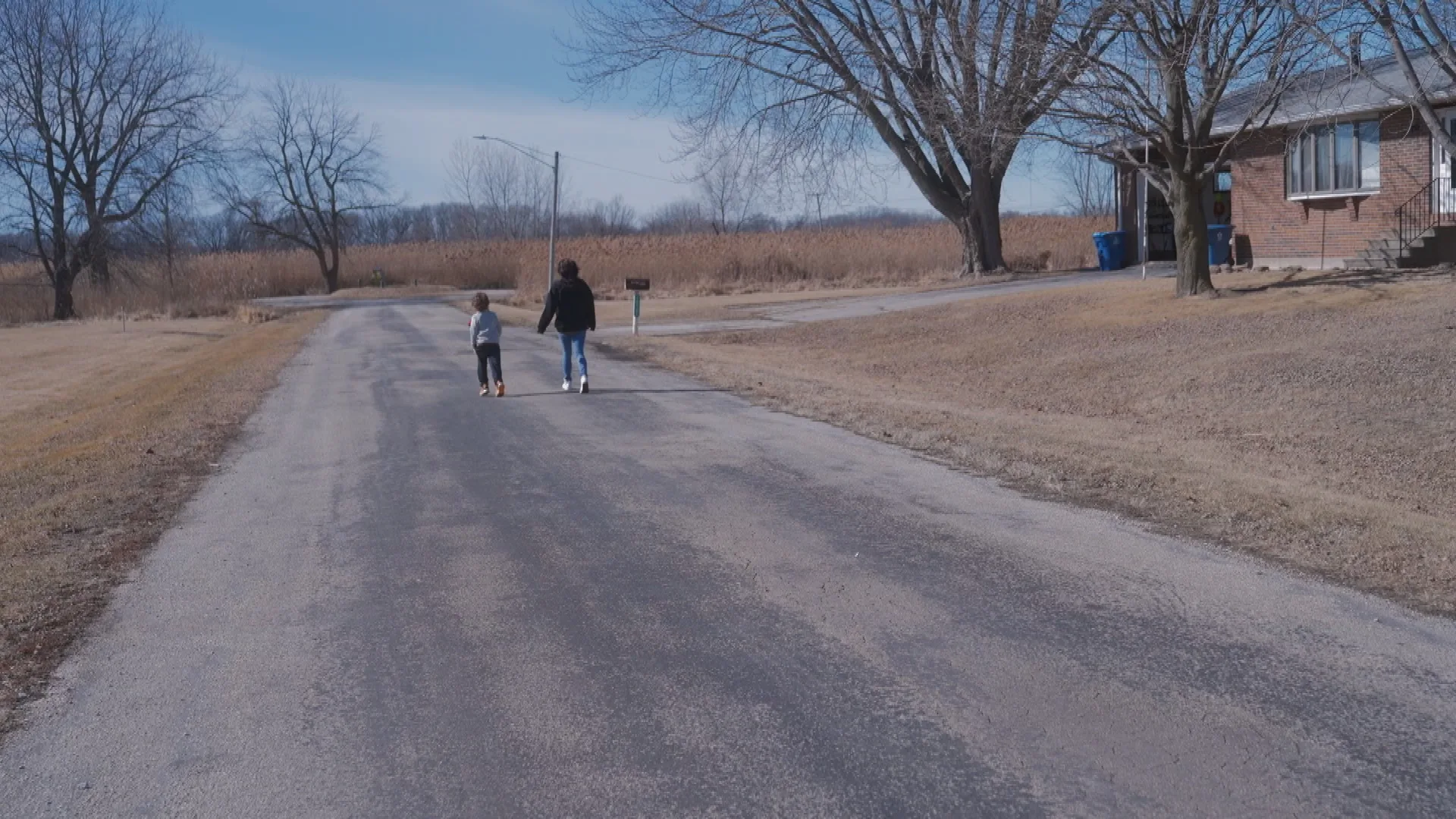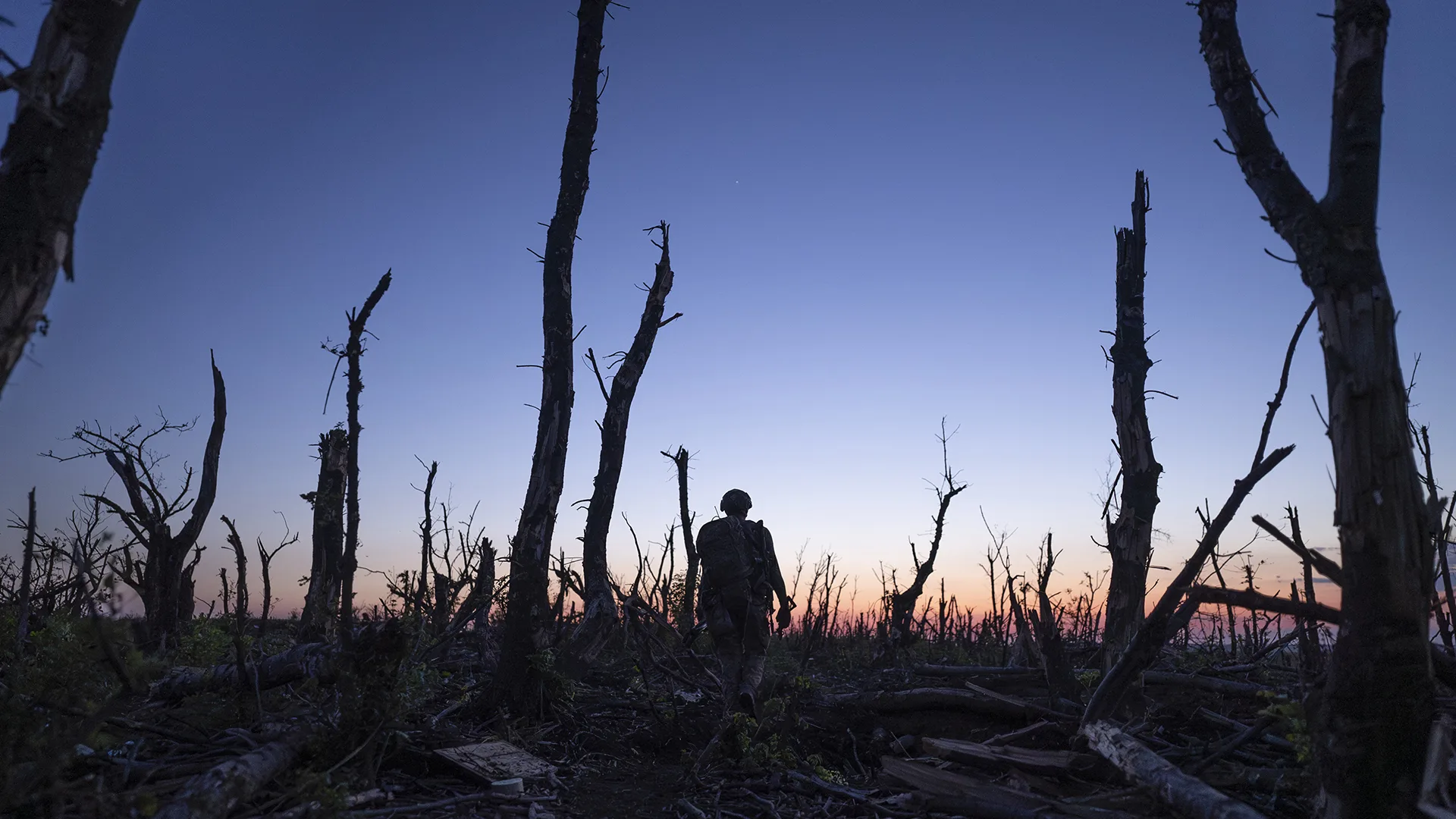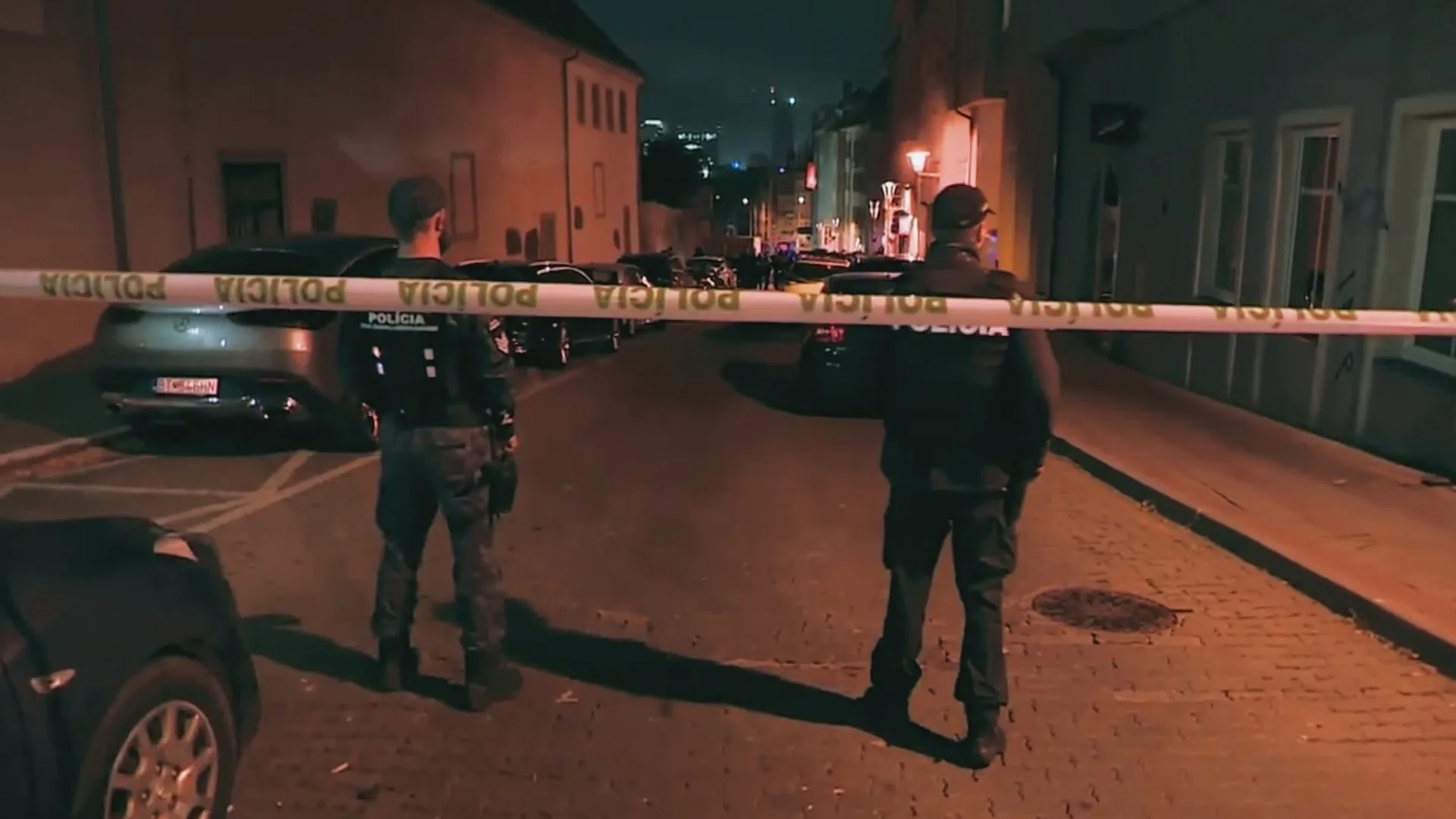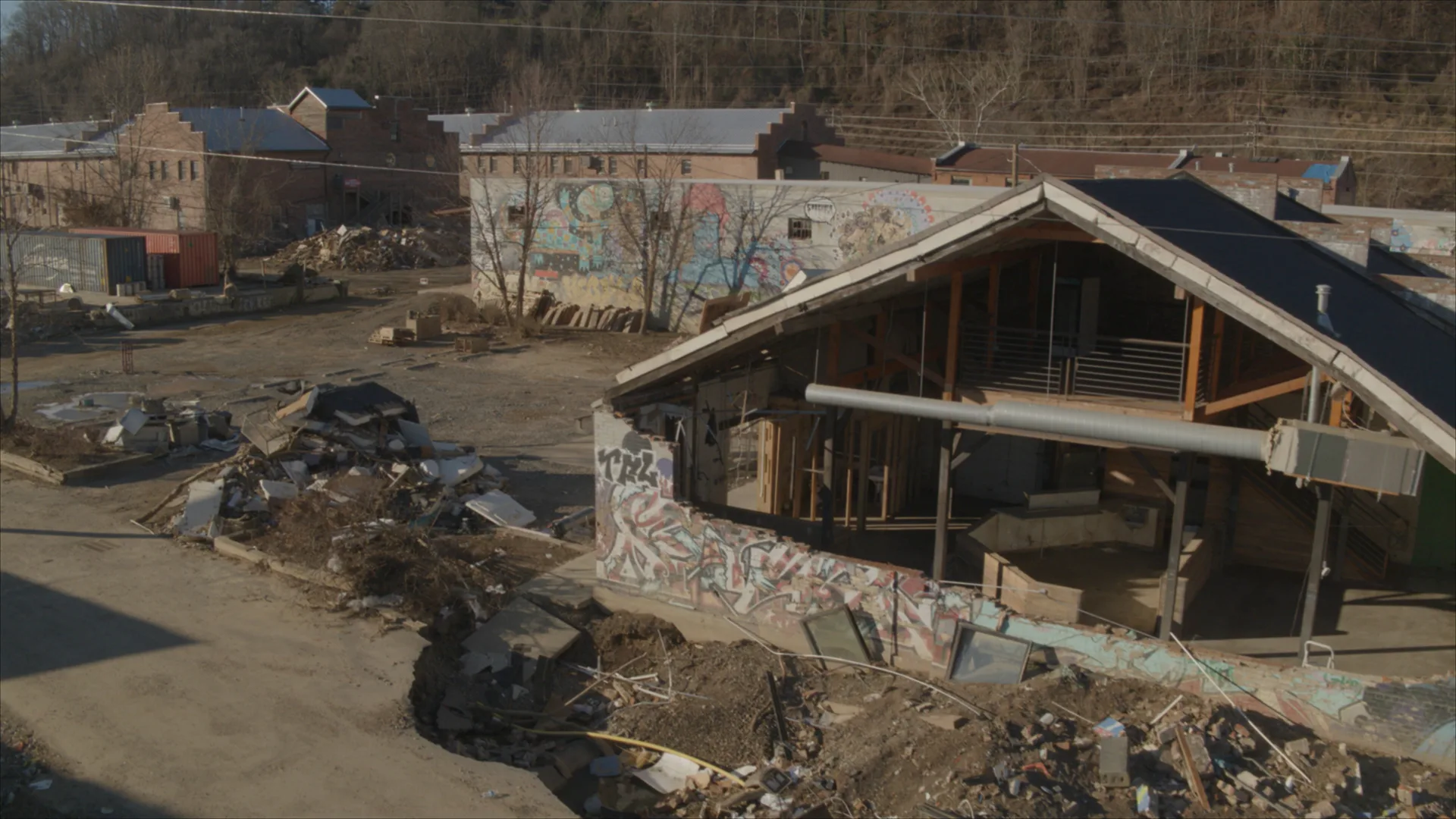Middle School Moment
July 17, 2012
13m
How one Bronx school is using a novel form of data collection and analysis to predict and prevent dropouts before they happen
Middle School Moment
July 17, 2012
13m
Share
Nationwide, 7,000 students drop out every school day. In Middle School Moment, FRONTLINE reports on new evidence that suggests the make-or-break moment for high school dropouts may actually occur in middle school. The film explores how one Bronx school is using a novel form of data collection and analysis to predict and prevent dropouts before they happen.
Middle School Moment is part of FRONTLINE’s Dropout Nation community engagement campaign supported by American Graduate: Let’s Make It Happen, a public media initiative funded by the Corporation for Public Broadcasting to help local communities across America identify and implement solutions to address the dropout crisis.
Support provided by:
Learn More
Most Watched
The FRONTLINE Newsletter
Related Stories

Coming in September on FRONTLINE
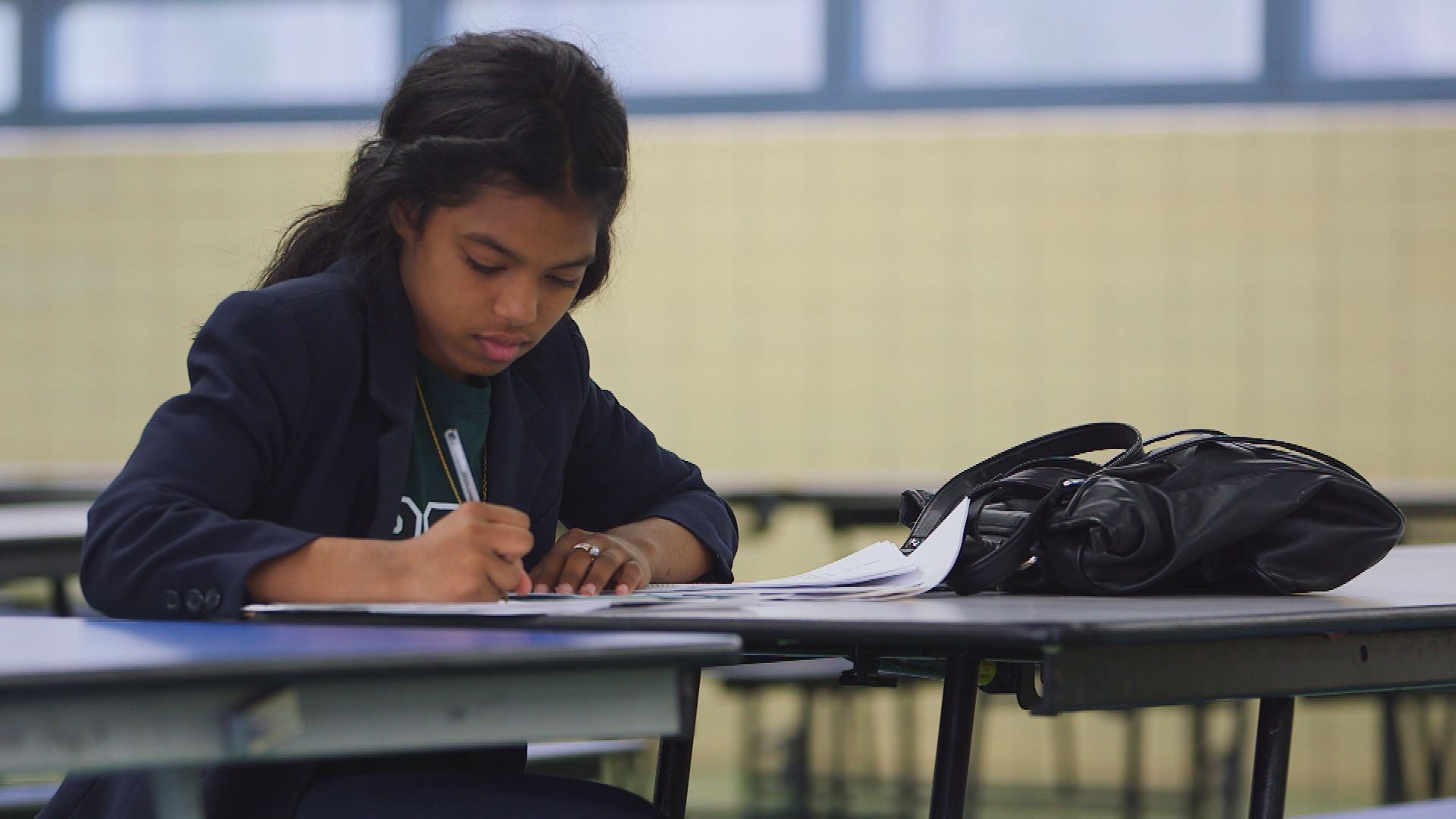
“Middle School Moment” Discussion Guide

What is the “Middle School Moment”?
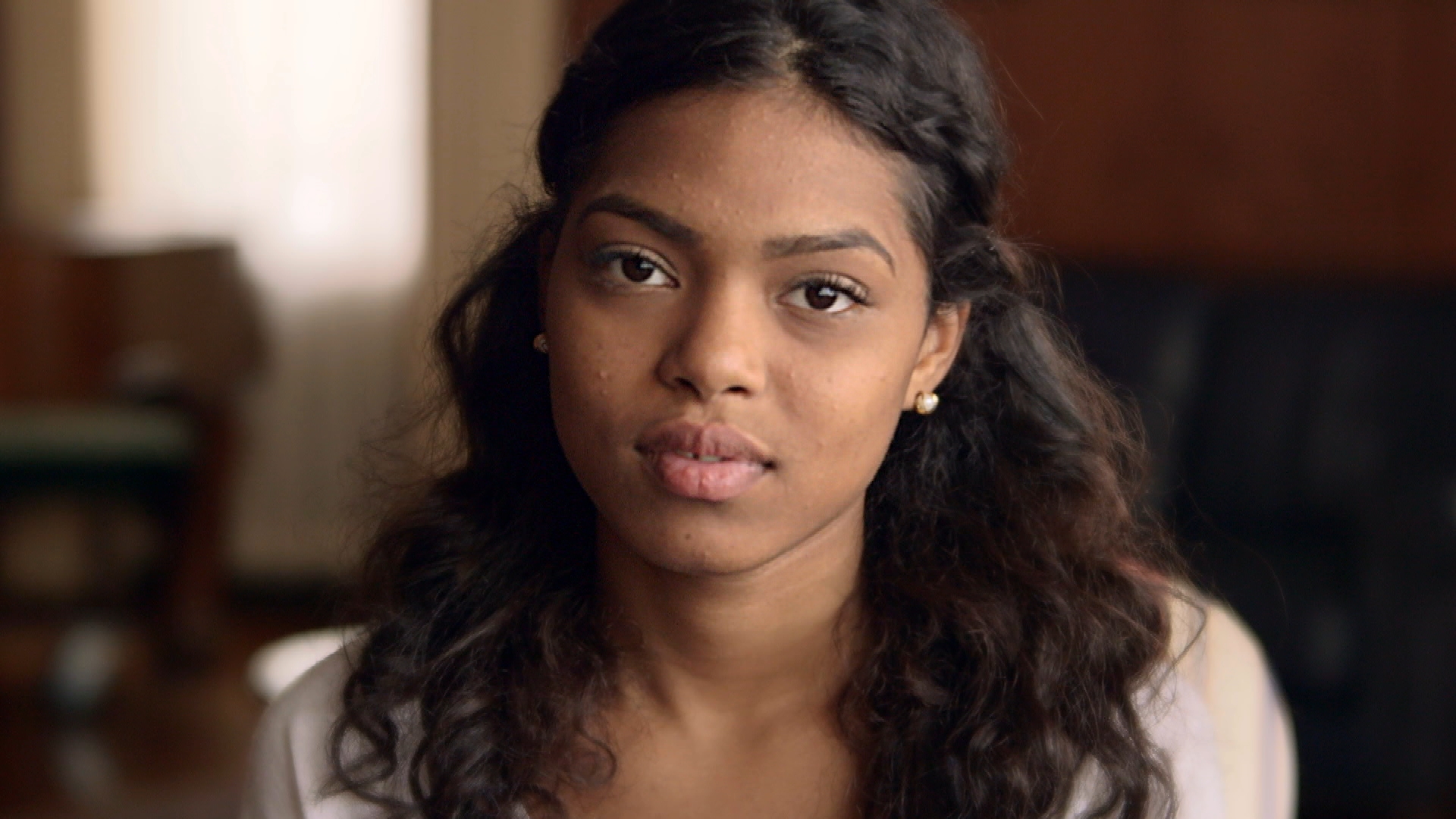
The Education of Omarina

A Subprime Education
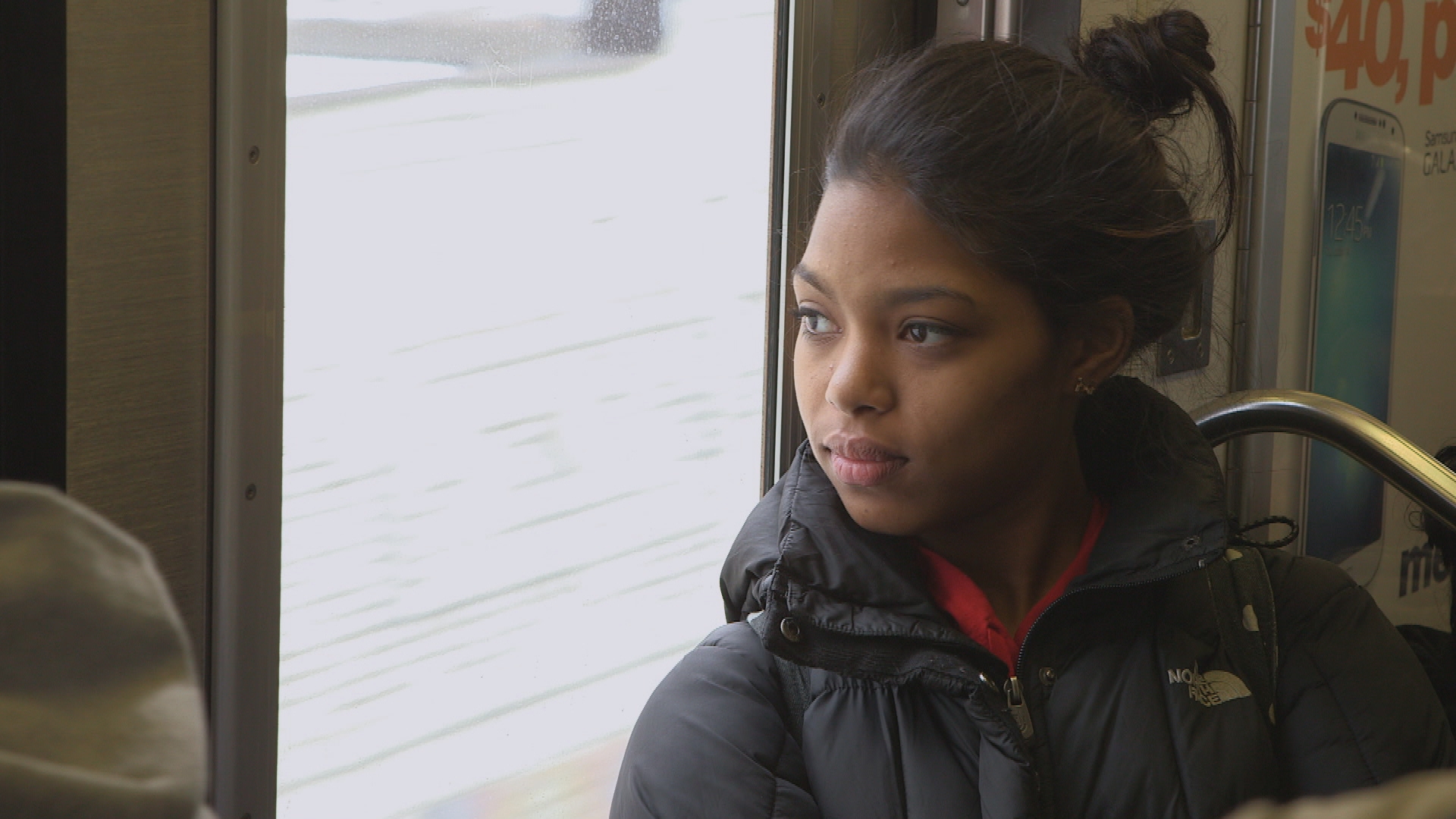
Omarina’s Story

Dropout Nation
Related Stories

Coming in September on FRONTLINE

“Middle School Moment” Discussion Guide

What is the “Middle School Moment”?

The Education of Omarina

A Subprime Education

Omarina’s Story

Dropout Nation
PRODUCED BY Mary Robertson
WRITTEN BY Frank Koughan
NARRATOR: Two-and-a-half years ago, Omarina Cabrera, a student at Middle School 244 in the Bronx, was struggling.
OMARINA CABRERA: My first year here, me and my mom got evicted. I felt shattered. That was the home that I had for my whole life and I grew up there. I didn’t know what was going to happen next. That period of not knowing wasn’t something that I felt comfortable with. I felt this inkling in me that I would never want my children or anyone else to experience.
[Twitter #Frontline]
NARRATOR: Shuffled between relatives’ apartments, some without even electricity, Omarina suffered another loss.
OMARINA CABRERA: When I was really young, my father walked out for whatever reason. I finally got in touch with him. Just before we were about to talk and I was about to go see him, he had a stroke. And I had to leave to the Dominican Republic and see my father for the first time, and it was in a casket.
NARRATOR: With her home life in chaos, Omarina’s school life began to suffer. She didn’t know it, but she was starting down a path that so many other young people take. Every year, over a million students fail to finish high school.
ROBERT BALFANZ, Johns Hopkins University: Even kids in the most dire circumstances really want a future. They just need to have a path to it.
NARRATOR: For 15 years, Robert Balfanz, a leading education researcher, has been studying the population of children who drop out of high school. Then he realized that the key moment when kids begin to go down the wrong path was in middle school.
TEACHER: What does that refer to? Stephanie?
STEPHANIE: When 9 divides the parabola into two equal parts.
ROBERT BALFANZ: If in the middle grades, you develop habits of not coming to school regularly, of getting in trouble or failing your courses, you bring that with you to high school. And the schools aren’t designed to help them succeed.
NARRATOR: But how do you identify those middle school kids most at risk? What exactly are the warning signs? Balfanz and his team harvested data from dozens of high-poverty schools, schools where at least 40 percent of the students qualify for government-subsidized lunch.
ROBERT BALFANZ: We looked at about 40 different variables, and we put that into a big statistical analysis and said we want factors that are highly reliable and also yield a large number of kids in trouble.
NARRATOR: And within this chaotic tangle of data, the team found something revealing.
ROBERT BALFANZ: And basically, out of this mix, four came out really strong. And that was our sort of Eureka moment. I saw kids waving their hands saying, “Help. Help me stay on track.”
NARRATOR: The data showed that if a 6th grade child in a high-poverty school attends school less than 80 percent of the time, or fails math or English, or receives an unsatisfactory behavior grade in a core course, that absent effective intervention, there is a 75 percent chance that they will drop out of high school.
ROBERT BALFANZ: It may seem far less than rocket science, but it’s something that, in fact, schools by and large have not paid attention to.
NARRATOR: Schools have long collected statistics on absences, behavior, and of course, grades, but many educators don’t recognize the significance of those numbers.
The principal of Middle School 244, Dolores Peterson, is one who did.
DOLORES PETERSON, Principal, Middle School 244: The Balfanz research was so interesting to us because we looked at it and we said this is a great way to identify our students at a very early stage.
NARRATOR: Students like Omarina Cabrera, who had been showing up late or not at all.
OMARINA CABRERA: At the beginning, I felt alone and I felt ashamed, and I didn’t want to speak to anyone about it. I just isolated myself from everything and everyone.
NARRATOR: But the data spoke for Omarina. Every week at Middle School 244, statistics are collected and reviewed by a team of counselors and teachers.
DOLORES PETERSON: Attendance— everyone’s with me?
COUNSELOR: Yes.
DOLORES PETERSON: Let’s go to 802. Omarina. How is Omarina doing?
NARRATOR: The students most in need are flagged.
COUNSELOR: Currently, her mother’s not even in the United States right now. She was in a shelter not that long ago. Then they were evicted, so she’s having to go between relatives.
NARRATOR: And their assigned counselor organizes an intervention.
COUNSELOR: I took her home one day, and it’s, like, a— it’s a double commute. It’s a bus to a train. It’s on the other side of the world, you can say.
DOLORES PETERSON: I can’t tell you how much I worry every time she leaves this building.
COUNSELOR: When she leaves this building, you know, she’s on her own.
DOLORES PETERSON: Let her know that we’re going to support her, and keep us posted on what she needs.
Our students face challenges sometimes that young children shouldn’t have to face. And they need that support of the adult to help them through it.
CATHERINE MILLER: It’s all going to work out. And it’s-
NARRATOR: Catherine Miller was Omarina’s home room teacher.
CATHERINE MILLER: So once Omarina was identified, it was imperative on my part as a home room teacher, in consultation with the guidance counselor and administration, to discuss why she was coming in late so many times.
OMARINA CABRERA: They came to me and they asked me, “What’s wrong? You’ve been late a lot. Something has to be wrong.” And that’s when I told Ms. Miller that I was evicted.
CATHERINE MILLER: Your mother needs to feel safe, or she needs to feel good about where you are, as do you. And the best we can do right now—
We can compile thousands of numbers about who’s failing this or who’s passing that, but if there’s no response to that data, if there’s no initiative taken to understand that data, it’s all for naught.
NARRATOR: It became clear that a chaotic home life was the source of Omarina’s problem at school and she needed targeted practical support.
COUNSELOR: So you’re going to take this one today—
NARRATOR: The team helped her figure out routes to school from ever-changing addresses, got her a bus pass and books.
OMARINA CABRERA: Ms. Miller told me that I can break through it, that I’m strong enough, that I have the courage to do it. And the fact that she believed in me, I believed in me. And that’s something that— that a lot of people go through.
[www.pbs.org: Inside Middle School 244]
ROBERT BALFANZ: They need an adult counterforce, someone to say, “Did you get your work done? Let me make sure you understand it,” and also deal with, like, “I know you’re having trouble with this teacher or that teacher or these kids. Let’s work it out. Let’s solve it now.”
It’s that sense of shepherding is what the kids need to know that an adult not only cares, but the adult can actually help them.
DOLORES PATTERSON: How’s it going at home?
OMARINA CABRERA: It’s good. It’s not completely settled because of my mom, but I think it’s calmer than before.
DOLORES PATTERSON: That’s great. That’s great. And your brothers?
NARRATOR: Omarina has two brothers, one older and one her twin.
OMARINA CABRERA: My first year here, I had a lot of different things going on. I had my brother, who was so smart, and he was just like— he’s my twin. My brother began to be exposed to a lot of the things that were out there. And not only him but a lot of us were. Not a lot of kids make the right choice, and that is happening a lot of times in the Bronx for a lot of people.
NARRATOR: In the summer after 6th grade, her twin started hanging out on the streets and getting in trouble. His mother had him transferred to another school, thinking he’d be safer in a different neighborhood. But today, Omarlin rarely attends school and his future seems uncertain.
OMARLIN CABRERA: Where am I going to go to high school? I don’t know. I haven’t gotten a letter yet of acceptance.
OMARINA CABRERA: The fact that he got involved with the streets and the fact that he let the neighborhood influence him— he just began slipping off the mountain, slipping off, slipping off, slipping off.
It really was a difficult time for me. However, I think the only reason I got through it was because of support people bring to me, Ms. Miller and my guidance counselor. The fact that they told me, “You’re bright and you’re special,” and drove me and encouraged me, told me never to quit and never let your dreams end at the corner of Sedgwick Avenue, I don’t think I would be where I am today. And I wish my brother could have gone on the journey with me, as well.
NARRATOR: By the time she was in the 8th grade, Omarina had achieved near perfect attendance and had an average in the 90s.
TEACHER: Who agrees and why? Omarina.
OMARINA CABRERA: Because when you solve negative B over 2A to get the vertex—
NARRATOR: Soon she began working on applications to some of the nation’s best high schools.
CATHERINE MILLER: That was your best essay. Read it to me again. I love it!
[www.pbs.org: Watch on line]
OMARINA CABRERA: Typically, young adults look upon a political figure or someone in their life for guidance and support. I, on the other hand, seem to find this inspiration within a black-and-white street sign. Imprinted on the signs are the words, “One way.” It taunts me with another reminder that coming in is not the obstacle, but making it out.
I don’t think that me and my brother are on the same road. And I think he fell off and it’s really sad. The way you take school is important. He didn’t, and that’s why we’re going on different paths, I guess.
ROBERT BALFANZ: Any school can use this system to keep kids on track. And what’s going to vary from school to school is the extent they’re going to need to recruit an outside second shift of adults to help. And that’s going to always depend on the sheer number of kids.
NARRATOR: Middle School 244 reallocated their resources, hiring fewer school aides, redistributing responsibilities among the teachers, and hiring an additional counselor. Now there is an adult assigned to help every at-risk student.
MUSIC TEACHER: Ready? Cory, start them off. Louder than that. Let’s go! You’re a small group, so you need to make sure that you sound like something.
ROEMELLO, 8th Grader: When I came to this school, my opinion about school did change. Before, I felt that school was a waste of time.
JUSTIN, 8th Grader: Before I came here, I used to didn’t like learning a lot. I used to, you know, like watching TV or, like, going on the computer.
TYNIAJ, 8th Grader: When I wake up and I know I have to go to school in the morning, I have something to look forward to.
ROEMELLO: I like that I can go to a teacher when I need help.
JUSTIN: My hobby is researching more history, armies.
TYNIAJ: I am proud of myself because from last year, in— last year in April, I wasn’t doing— I was doing really bad, and now in April, I’m doing really good.
NARRATOR: These are some of the success stories at Middle School 244, but even this school can’t help all their at-risk students. And in America’s high-poverty schools, there are few intervention programs like the one at Middle School 244.
OMARINA CABRERA: That’s what makes it so interesting with my brother. I think that’s what I would be. I would be not in the school, and I think I would be— I wouldn’t care, and the fact that I would get into a college wouldn’t be that big of a deal. And the fact that I go on to high school, that wouldn’t matter to me. I can get my GED later, that’s what I would say.
NARRATOR: But chances are Omarina won’t be settling for a GED. She’s just found out she’s been accepted at nine high schools, including an elite boarding school in Massachusetts.
DOLORES PETERSON: Omarina, I’m so excited for you. So what did you decide? Which school did you choose?
OMARINA CABRERA: After giving it a lot of thought, I went with Brooks.
DOLORES PETERSON: So are you excited?
OMARINA CABRERA: Yeah.
DOLORES PETERSON: I know I am! How does it feel, Ms. Miller?
CATHERINE MILLER: It’s very humbling. And I’m incredibly proud of your accomplishments.
OMARINA CABRERA: Oh, Ms. Miller! You’re going to make me cry!
NARRATOR: Omarina Cabrera is on her way to graduating. But across the country, thousands of students remain at risk, hidden in the data.
Middle School Moment July 17, 2012
PRODUCED AND DIRECTED BY Mary Robertson
WRITTEN BY Frank Koughan
REPORTED BY David Montero
EDITOR Jessica Reynolds
ADDITIONAL EDITING David Mehlman Nelson Ryland
LINE PRODUCER Michelene Starnadori
POST PRODUCER Michael Mezaros
NARRATED BY Will Lyman
DIRECTOR OF PHOTOGRAPHY Wolfgang Held
ASSOCIATE PRODUCER Christina Lenis
SOUND George Ziadeh
UTILITY Thomas Liguori
PRODUCTION MANAGER Anna Haynes
ONLINE EDITOR/COLORIST Michael H. Amundson
SOUND MIX Christopher D. Anderson
POST PRODUCTION SUPERVISOR Kevin Fogarty
POST PRODUCTION COORDINATOR Lucas Mumford
POST PRODUCTION ASSISTANT Ariel Carson
RIGHTS & CLEARANCES SUPERVISOR Alicia A. Murphy
RIGHTS & CLEARANCES COORDINATOR Greg Duran
MUSIC PROVIDED BY Bryan Senti Found Objects Music Productions
ADDITIONAL REPORTING Jill Rosenbaum
OFFICE MANAGER Alex Pullen
PRODUCTION ASSISTANTS Brandon Dottin Rose Donnelly Jemaray Pratt Mark Whelan
LOGGERS Ernest Coaxum Amy Kane Doron Hagay Jenny Lee
PRODUCED FOR LEFT/RIGHT BY Kevin Vargas
EXECUTIVE PRODUCERS FOR LEFT/RIGHT Ken Druckerman Banks Tarver
A FRONTLINE production with Left/Right Docs
FOR FRONTLINE
DIRECTOR OF BROADCAST Tim Mangini
ASSOCIATE DIRECTOR OF BROADCAST Chris Fournelle
ON-AIR PROMOTION PRODUCER Missy Frederick
ON-AIR PROMOTION EDITOR John MacGibbon
POST PRODUCTION EDITORS Michael H. Amundson Jim Ferguson Mark Dugas Shady Hartshorne
ASSISTANT EDITOR Eric P. Gulliver
POST PRODUCTION COORDINATOR Megan McGough
SERIES MUSIC Mason Daring Martin Brody
DIRECTOR OF AUDIENCE DEVELOPMENT Pamela Johnston
SENIOR PUBLICIST Diane Buxton
PUBLICIST Diane Hebert
ONLINE ENGAGEMENT COORDINATOR Nathan Tobey
OUTREACH MANAGER Sandy St. Louis
INTERNS Caitlin Birch Kyna Doles Rachel Gordon Marilyn He Jared Pelletier Mindy Yuen
SECRETARY Christopher Kelleher
EDITORIAL SECRETARY Katie Lannigan
COMPLIANCE MANAGER Talya Feldman
CONTENT MANAGER Lisa Palone
LEGAL Eric Brass Jay Fialkov Janice Flood Scott Kardel
CONTRACTS MANAGERS Emily McNamara
UNIT MANAGER Varonica Frye
BUSINESS MANAGER Tobee Phipps
DIGITAL RESEARCH ASSISTANT Jason Breslow
ASSOCIATE PRODUCERS FOR DIGITAL Gretchen Gavett Azmat Khan
PODCAST PRODUCER/REPORTER Arun Rath
DIGITAL TECHNOLOGIST Bill Rockwood
DIGITAL REPORTER Sarah Childress
SENIOR DIGITAL PRODUCER Sarah Moughty
WEBSITE DESIGN AND TECHNOLOGY Entropy Media, LLC
DIRECTOR OF NEW MEDIA & TECHNOLOGY Sam Bailey
DEPUTY STORY EDITOR Carla Borras
COORDINATING PRODUCER Robin Parmelee
SENIOR EDITORIAL CONSULTANT Louis Wiley Jr.
EXECUTIVE PRODUCER SPECIAL PROJECTS Michael Sullivan
DIRECTOR OF DIGITAL MEDIA/SENIOR EDITOR Andrew Golis
MANAGING EDITOR Philip Bennett
SERIES MANAGER Jim Bracciale
SERIES SENIOR PRODUCER Raney Aronson-Rath
EXECUTIVE PRODUCER David Fanning
Copyright 2012 WGBH EDUCATIONAL FOUNDATION All Rights Reserved
FRONTLINE is a production of WGBH/Boston which is solely responsible for its content.
Explore
Policies
Teacher Center
Funding for FRONTLINE is provided through the support of PBS viewers and by the Corporation for Public Broadcasting, with major support from Ford Foundation. Additional funding is provided the Abrams Foundation, Park Foundation, John D. and Catherine T. MacArthur Foundation, Heising-Simons Foundation, and the FRONTLINE Trust, with major support from Jon and Jo Ann Hagler on behalf of the Jon L. Hagler Foundation, and additional support from Koo and Patricia Yuen. FRONTLINE is a registered trademark of WGBH Educational Foundation. Web Site Copyright ©1995-2025 WGBH Educational Foundation. PBS is a 501(c)(3) not-for-profit organization.





